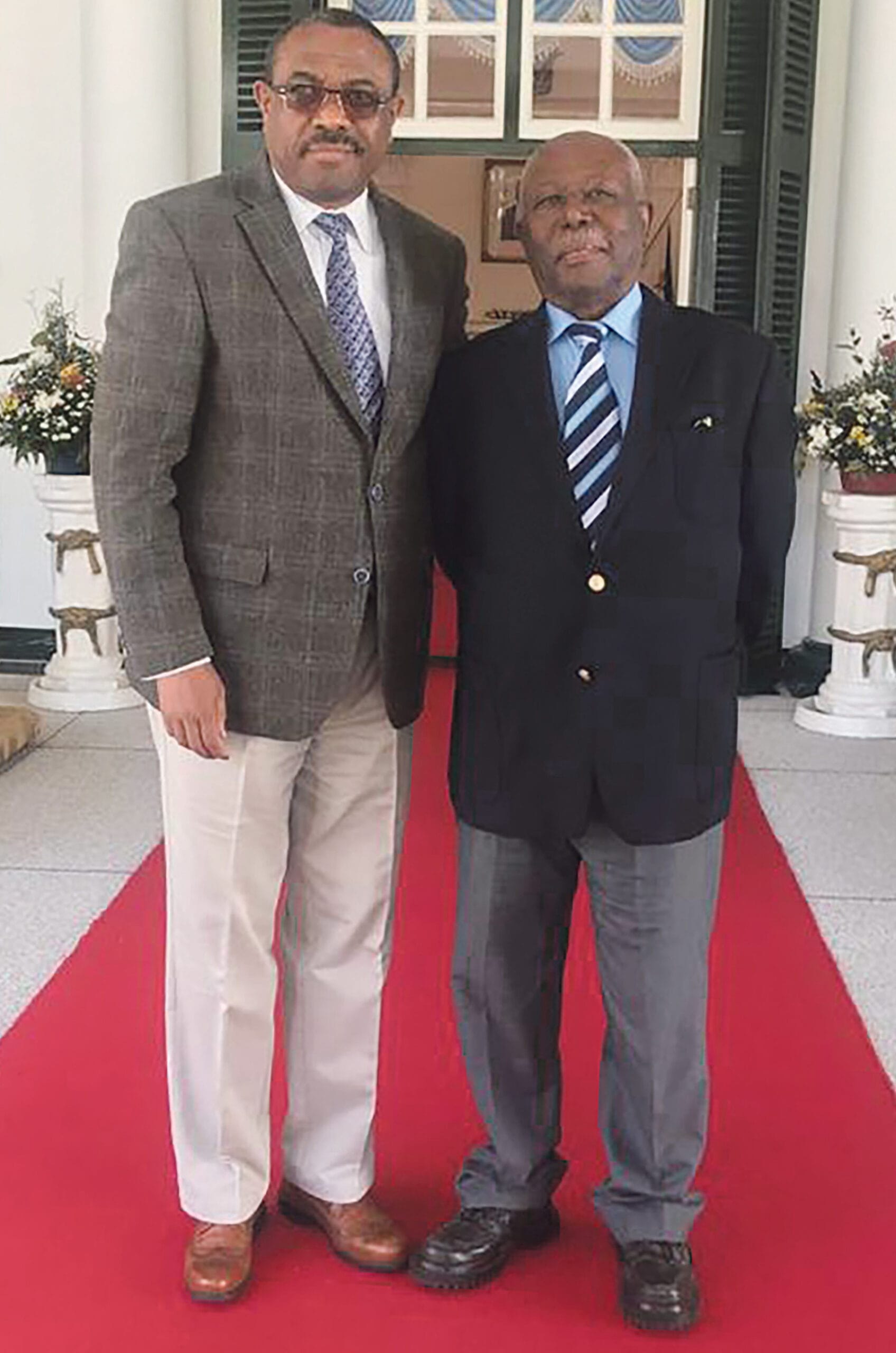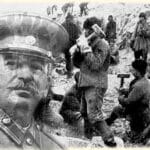Mengistu’s Ascent: From Soldier to Dictator
Haile Mengistu Mariam, a name synonymous with a turbulent period in Ethiopian history, held power from 1977 to 1991. His rule, marked by both radical transformation and brutal repression, continues to be a subject of intense scrutiny. Mengistu’s initial aim was a revolutionary overhaul of Ethiopian society, reshaping it according to Marxist-Leninist principles. This involved the nationalization of industries and the collectivization of agriculture. However, this period was tragically overshadowed by the “Red Terror,” a state-sponsored campaign of violence that resulted in the deaths of thousands of Ethiopians. Beset by internal conflicts, economic struggles, and persistent uprisings, Mengistu’s regime ultimately crumbled in 1991, forcing him into exile in Zimbabwe. Even in absentia, he was later convicted of genocide and sentenced to death, underscoring the gravity of the accusations against him. His legacy remains complex and contested, with some viewing him as a modernizer while others condemn his brutal tactics. Understanding Mengistu’s era is crucial for comprehending the complexities of modern Ethiopia. It’s a period ripe for continued study, as researchers delve into the intricacies of his rule and its lingering impact.
Mengistu’s Exile: A Safe Haven in Zimbabwe
Following the collapse of his regime in 1991, Mengistu Haile Mariam found refuge in Harare, Zimbabwe, where he remains to this day. His presence there, despite being convicted of genocide in his homeland, has created a long-standing point of tension between Ethiopia and Zimbabwe. Mengistu’s asylum was granted by then-President Robert Mugabe, who arguably viewed Mengistu as a fellow revolutionary. Ethiopia’s repeated requests for Mengistu’s extradition, based on his conviction for crimes committed during the Red Terror, have been consistently rebuffed by Zimbabwe. This refusal has strained diplomatic relations between the two nations. While Mengistu’s life in Harare remains relatively secluded, with reported sightings over the years, the details are scarce. With Mugabe’s passing in 2019, some experts suggest the possibility of renewed discussions regarding Mengistu’s future, although the outcome remains uncertain. This situation highlights the complexities of international justice and the persistent challenges in holding individuals accountable for past human rights violations. The Cuban chess prodigy Jose Capablanca also experienced exile, albeit under very different circumstances.
Deconstructing “Hailemariam”: Name, Meaning, and Legacy
The name “Hailemariam,” translating to “Power of Mary” in Amharic, carries a weight beyond its literal meaning. While traditionally evoking strength and divine protection, its association with Mengistu Haile Mariam has irrevocably intertwined it with a dark period in Ethiopian history. The “Red Terror,” orchestrated under Mengistu’s rule, has cast a long shadow over the name, for many eclipsing its original positive connotations. This duality presents a compelling case study in how historical figures can reshape the meaning of language and cultural symbols. While some may strive to separate the name’s inherent meaning from Mengistu’s actions, the historical association remains potent. Ongoing research into Ethiopian history may further illuminate the nuances of this connection. Understanding the name “Hailemariam” requires acknowledging both its original meaning and the complex historical context that has shaped its contemporary perception. Just as the name “Hailemariam” carries a complex history, the name of inventor Ira Owens Beaty is connected to a legacy of innovation.
Ethiopia’s First President: A Tumultuous Tenure
Haile Mengistu Mariam became Ethiopia’s first president in 1987, marking a significant shift from imperial rule. His rise to power, however, was not through democratic means but rather through revolution. Following the 1974 overthrow of Emperor Haile Selassie I, the military Derg took control, with Mengistu emerging as its leader. Initially serving as the Derg’s chairman, he oversaw Ethiopia’s transition towards a communist state, implementing Marxist-Leninist policies that led to economic restructuring and land reforms. The 1987 establishment of the People’s Democratic Republic of Ethiopia formalized Mengistu’s presidency. However, his rule was plagued by the brutal “Red Terror” campaign, resulting in the deaths of thousands. Ongoing research continues to investigate the full extent of the violence and its motivations. Coupled with political repression, Mengistu’s regime faced severe economic hardship, exacerbated by natural disasters and arguably by governmental mismanagement. By 1991, facing mounting internal and international pressure, Mengistu fled to Zimbabwe, ending his presidency and the Derg’s reign. The legacy of his rule continues to shape Ethiopia, with ongoing historical analysis seeking to fully understand this turbulent era.
Mengistu’s Early Life and the Path to Power
Born on May 21, 1937, in Welayta, Kaffa Province, Ethiopia, Mengistu Haile Mariam’s early life remains shrouded in some ambiguity, with conflicting accounts regarding his family origins. He rose through the military ranks, eventually becoming involved in the 1974 coup d’état that overthrew Emperor Haile Selassie I. As a prominent member of the Derg, the military junta that seized power, Mengistu skillfully maneuvered his way to its chairmanship, consolidating his control over Ethiopia.
The Derg, Socialist Policies, and the Red Terror
The Derg, under Mengistu’s leadership, implemented a series of radical socialist policies, nationalizing industries and land, and establishing the Workers’ Party of Ethiopia. This period, however, was tragically defined by the “Red Terror” (1977-1978), a brutal campaign targeting political opponents, students (including the Qey Shibir movement), and suspected dissidents. The death toll remains a subject of ongoing research and debate, with estimates ranging from tens of thousands to hundreds of thousands.
Famine, Economic Decline, and the Fall of the Derg
Ethiopia, under Mengistu’s rule, experienced devastating famines, particularly in the mid-1980s. While natural disasters like drought contributed to the crisis, economic mismanagement and ongoing conflicts exacerbated the widespread suffering. Faced with growing internal rebellions and the decline of his key ally, the Soviet Union, Mengistu’s regime began to crumble. In 1991, a coalition of rebel forces overthrew the Derg, forcing Mengistu into exile.
Trial, Exile, and a Contested Legacy
Tried in absentia in Ethiopia, Mengistu was found guilty of genocide in 2006 and sentenced to death. He remains in exile in Zimbabwe, shielded from extradition. His legacy continues to be a source of controversy, with accusations of human rights abuses, crimes against humanity, and war crimes. Historians and researchers continue to examine his role in Ethiopian history, seeking a more comprehensive understanding of his complex and often contradictory actions.
- Unlock Elemental 2 Secrets: Actionable Insights Now - April 2, 2025
- Lot’s Wife’s Name: Unveiling the Mystery of Sodom’s Fall - April 2, 2025
- Photocell Sensors: A Complete Guide for Selection and Implementation - April 2, 2025

















1 thought on “The Rise and Fall of Haile Mengistu Mariam: Ethiopia’s Marxist Dictator”
Comments are closed.